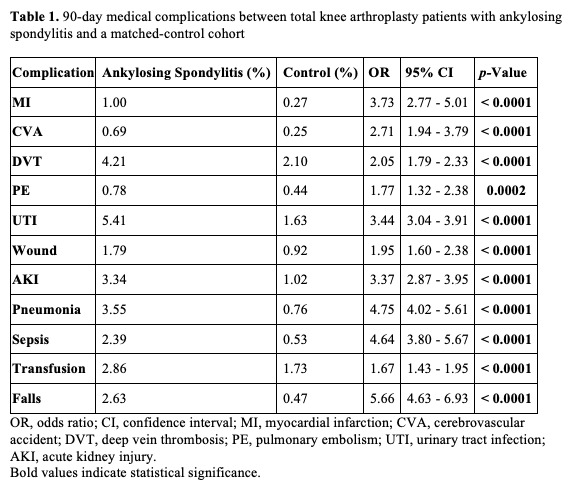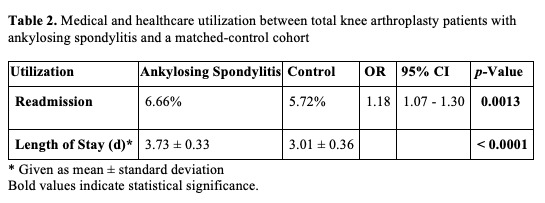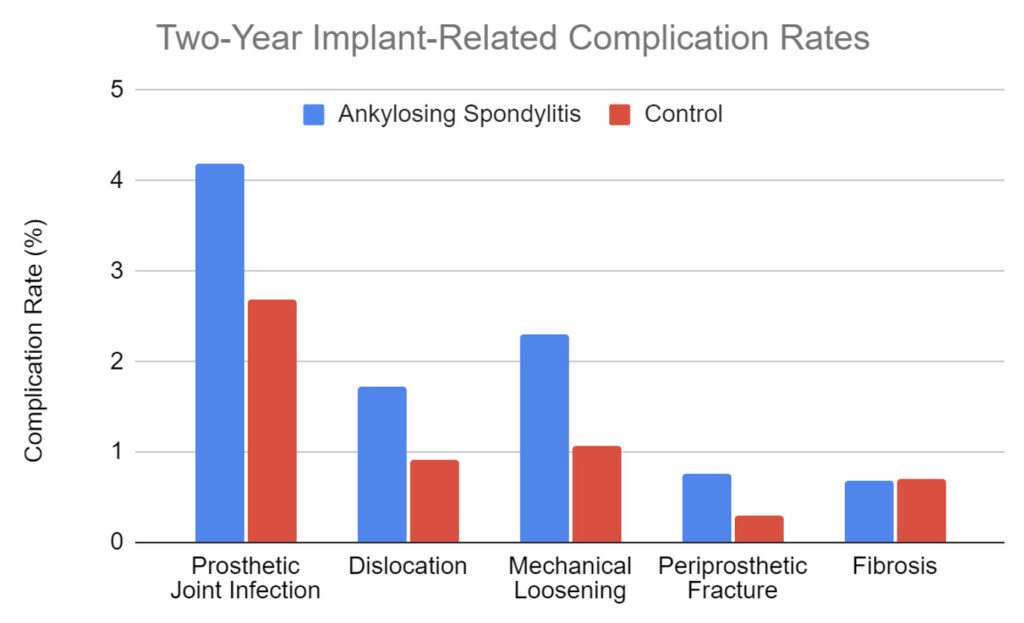1Mekkawy K, 1Rodriguez H, 1Sakalian P, 2Gosthe R, 1Stanziola F, 1Corces A, 3Roche M
1Larkin Community Hospital, North Haledon, NJ, United states; 2Holy Cross Orthopedic Institute, Fort Lauderdale, FL, United states; 3Hospital for Special Surgery, West Palm Beach, FL, United States
Introduction
Ankylosing spondylitis (AS) is an inflammatory arthritis that can affect most joints of the body, most commonly the spine and sacroiliac joints. Total knee arthroplasty (TKA) is effective in improving pain in function in patients with AS with knee joint involvement. However, gait mechanics may be altered in those with AS, which may lead to increased stress through the joint. Thus, the aim of this study was to assess the effects that AS has on medical and implant complications, falls, length of stay, and readmissions following TKA.
Methods
We conducted a retrospective query of the Mariner private insurance claims database from 2010 to 2020. All cases of TKA and those with a diagnosis of AS were identified using Current Procedural Terminology and International Classification of Disease codes. Patients who underwent TKA with AS were matched to non-AS patients 1:5 based on demographic and comorbidity profiles. Ninety-day medical complications, falls and readmission rates, as well as 2-year implant complications were compared between cohorts.
Results
A total of 7,728 AS patients were matched to 38,598 control patients. The AS group had significantly higher rates of medical complications examined as well as falls when compared to the control group. The AS group had significantly higher rates of prosthetic joint infection, dislocation, mechanical loosening, and periprosthetic fracture (all p<0.0001), while there was no difference seen in rates of fibrosis. Likewise, mean length of stay and readmissions were significantly greater in the AS group.
Conclusions
Ankylosing spondylitis in patients undergoing TKA is associated with significant risk of medical and implant complications, as well as fall risk, costs, length of stay, and readmission rates. The findings of this study may allow orthopedic surgeons to be more attentive to identifying those patients at risk, and allow for more educated patient counseling of potential involved risks.






